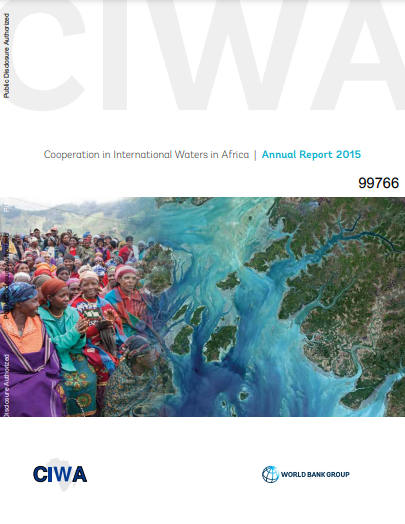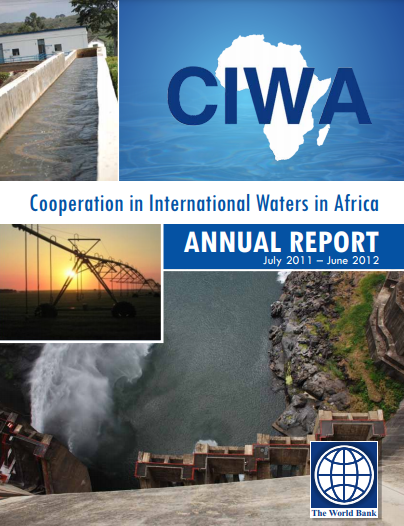Rapport annuel de CIWA pour 2017 (en anglais)
Ce rapport annuel décrit comment le programme CIWA travaille pour résoudre les défis auxquels l'Afrique est confrontée aujourd'hui: développement économique et croissance, réduction de la pauvreté et inclusion sociale, atténuation et adaptation au climat, fragilité et conflits, et gestion et réduction des risques de catastrophe.
Rapport annuel de CIWA pour 2016 (en anglais)
En soutenant les institutions de bassin, en comblant les lacunes dans les connaissances et en aidant les pays à concevoir des infrastructures transfrontalières, ce rapport annuel décrit comment CIWA apporte des contributions importantes à une meilleure gestion des eaux partagées.
Rapport annuel de CIWA pour 2015 (en anglais)
Ce rapport annuel décrit comment le programme de Coopération pour les eaux internationales en Afrique (CIWA) a construit une plate-forme de soutien exceptionnelle pour les pays africains qui cherchent à surmonter les obstacles politiques, financiers, techniques et logistiques complexes qui surgissent lors de la mobilisation des eaux internationales pour une croissance résiliente au climat.
15 Year Nile Story
The Nile Story is one of immense challenges and remarkable achievements for the economic development of the region. It begins in 1999, when the ministers in charge of water affairs in the Nile countries agreed to form the Nile Basin Initiative (NBI). Between 2003 and 2015, the Nile Basin Trust Fund (NBTF) supported and coordinated cooperative work in the region, which has been delivered mainly through the NBI. This book, commissioned by the World Bank on the closure of the NBTF, captures some insights to this 15 year story, the role of the NBI, and how its many achievements have been made along the way.
Author: World Bank
Plan de développement et d’adaptation au changement climatique du lac Tchad
Le Plan de développement et d’adaptation au changement climatique du lac Tchad (LCDAP) a été élaboré par la Commission du bassin du lac Tchad (CBLT) et ses six pays membres : le Cameroun, la Libye, le Niger, le Nigéria, la République centrafricaine et le Tchad. Auteurs : AfD, CIWA, Commission du bassin du lac Tchad & Groupe de la Banque mondiale
Rapport annuel de CIWA pour 2014 (en anglais)
Ce rapport annuel donne un aperçu du programme CIWA et des résultats escomptés à long terme, un résumé des projets en cours et un résumé des prochaines étapes du programme.
Rapport annuel de CIWA pour 2013 (en anglais)
Ce rapport annuel couvre la période de juillet 2012 à juin 2013, répertorie les progrès accomplis par le programme dans la construction d'un solide portefeuille d'engagements à travers l'Afrique et présente un aperçu de ses réalisations au cours de l'année écoulée.
Rapport annuel de CIWA pour 2012 (en anglais)
Ce rapport annuel décrit les progrès de CIWA au cours de la période de juillet 2011 à juin 2012. Le rapport donne un aperçu du programme de la CIWA et des résultats attendus. Il résume la demande actuelle que CIWA a reçue des bassins en Afrique subsaharienne.










